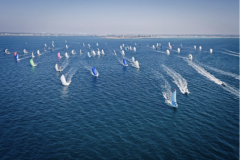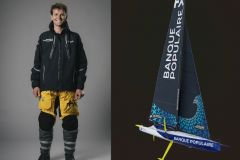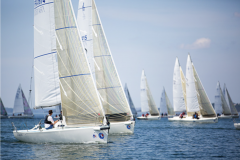The Vendée Globe is much more than a race: it's a real human adventure in which skippers must sail around the world single-handed, non-stop and without assistance. The planetary regatta course, with its key passages, tests the physical and mental stamina of the sailors. Here are the ten most critical passages to watch out for during this race.
1. The Bay of Biscay: The first challenge
Leaving Les Sables-d'Olonne, the skippers are quickly plunged into one of the world's roughest waters. At this time of year, the Bay of Biscay is often swept by powerful lows, generating waves of up to 6 to 8 meters. This first test puts the sailors' equipment and preparation to the test. There is also a risk of collision with the many boats in the area. Historically, there have been a lot of retirements during the first few days of the race. The sailors are just coming off three weeks on the Vendée Globe pontoon in Les Sables-d'Olonne, punctuated by a variety of demands, so they're a little tired and not in symbiosis with their boat.
2. The trade winds, finally stable
With the trade winds, the wind becomes much steadier and this is the moment when the solo sailors "really" enter their round-the-world race. Crossing near the Canaries or Cape Verde can be surprising, with deviations over several miles.
3. The Doldrums: Weather roulette
Located near the equator, between the trade winds of the northern and southern hemispheres, the Doldrums are renowned for their unpredictable weather. This inter-tropical convergence zone is famous for its violent squalls and periods of absolute calm. This is where the two trade winds collide, creating a lot of waves and very unstable winds. Depending on the weather files, the skippers will decide at which longitude to enter this zone. It's an anxious zone for sailors.
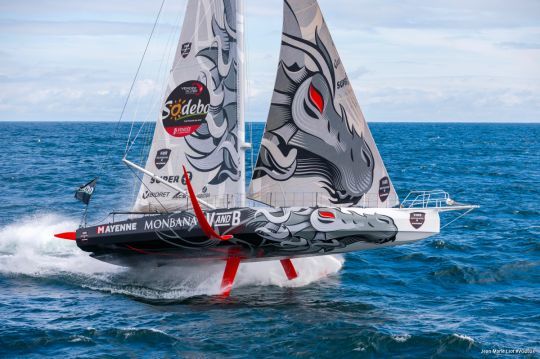
4. The St. Helena High: An obligatory detour
The St. Helena High is another difficult passage, as the skippers have to go around it from the west, close to the coast of Brazil, thus lengthening their route. This zone of high pressure in the South Atlantic is often synonymous with light winds - a real strategic headache. This zone allows sailors to enter into summer temperatures, as it's the austral summer, with fairly irregular winds. It's a last moment of mildness before the brutal arrival in the Indian Ocean.
5. Antarctic exclusion zone
This zone is defined according to melting ice, to limit the risk of collision with an iceberg. Skippers, who must not go too far south, must take a slightly more northerly route or face penalties. This avoids bad encounters and shipwrecks, and limits the risks for skippers and boats alike.
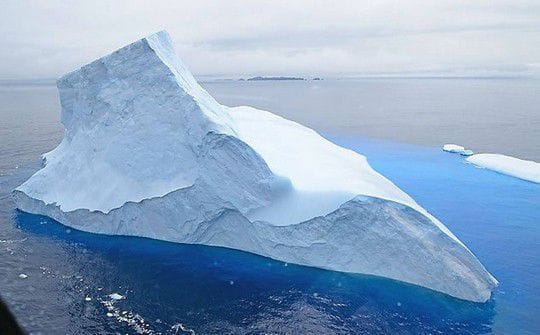
6. The Cape of Good Hope: the gateway to the Indian Ocean
Rounding the Cape of Good Hope is a symbolic stage in the Vendée Globe. Located at the southern tip of Africa, it marks the sailors' entry into the southern seas and the start of the long crossings into the Roaring 40s. Sailors leave behind relatively mild conditions to enter colder, more unstable zones. This ocean is particularly difficult, with storms, gales and temperatures dropping by more than 10°. It's in this zone that the big gaps begin to open up, and it's important to remain vigilant.
7. Les 50es Hurlants: the Pacific Ocean
These southern latitudes, where the winds are particularly powerful, offer extreme sailing conditions. This is the most challenging part of the race. The elements are unusually violent, and the sailors have to be extra careful as they are isolated from everything and far from help. In particular, they will pass Point Nemo, the furthest point from any inhabited land in the Pacific Ocean. At this stage of the race, the skippers are 2,700 kilometers from the nearest land. Sailing in this isolated zone demands redoubled attention, as any damage could be catastrophic, far from any help.
8. Cape Horn: Deliverance
The approach to Cape Horn is difficult, with often strong winds. It marks the exit from the Deep South, but all is not yet over, even if the skippers feel a kind of deliverance. They may encounter a zone where currents can raise very rough seas. As they round this legendary cape, they leave the cold, hostile waters behind them to begin their ascent of the Atlantic.
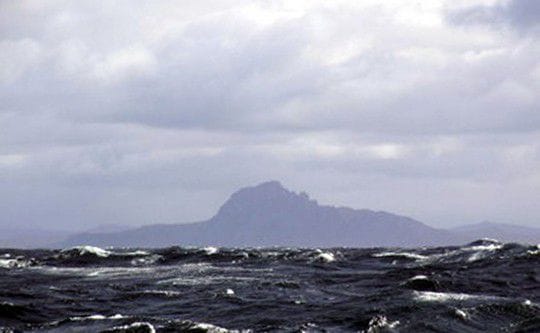
9. Up the South Atlantic
In this zone, conditions can be tricky, with strong winds and predominantly upwind sailing, before reaching the trade winds. It's a difficult stretch of the Vendée Globe course to negotiate. After that, we have to negotiate the St. Helena High and the Doldrums, even though they should be narrower to the west at this time.
10. The Azores high (back): last hurdle before victory
On the way back, after sailing up the South Atlantic and crossing the Doldrums again, the skippers still have to negotiate the Azores High. This last obstacle, combined with the winter lows of the North Atlantic, is a real test before the triumphant arrival in Les Sables-d'Olonne. Not to mention the entry into the Bay of Biscay, which can generate very heavy seas.


